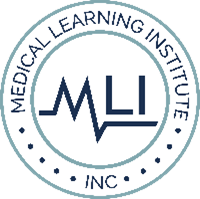The Evolution of HCT Self-Paced Learning Course
Earn up to 4.25 CME/CE credits in this five-part series
Community hematology/oncology practices play a critical role to expand patient access to hematopoietic cell transplantation (HCT) and improve patient outcomes. This five-part self-paced learning course will help you better understand the current state of the science for HCT and cell therapy by following the evolution of HCT and addressing common misconceptions.
You’ll gain a better understanding of barriers to consultation at a transplant center and resources available to hematology/oncology practices to help overcome those barriers.
Modules in the five-part course include:
- Part 1: HCT Basics and Outcomes (1.5 CME/CE credits)
- Part 2: Eligibility for Transplant (0.75 CME/CE credits)
- Part 3: Donor Availability (0.75 CME/CE credits)
- Part 4: Addressing Barriers to HCT (0.5 CME/CE credits)
- Part 5: Shared Care (0.75 CME/CE credits)
Take the course as you have time but complete all five modules within six months for the best learning experience. The National Marrow Donor Program® (NMDP)/Be The Match® developed this free CME/CE course with content approval by physicians from the American Society for Transplantation and Cellular Therapy (ASTCT).
Target Audience
Community hematologists/oncologists, hematology/oncology advanced practice providers, and BMT fellows at transplant centers
Part 1: HCT Basics and Outcomes
CREDITS: 1.5 CME/CE
Access Part 1: HCT Basics and Outcomes
Part 1 lays the groundwork for the rest of the course. This module covers the basics of HCT, including the role of HLA, the evolution of HCT, and commonly held HCT misperceptions and concerns.
Then, you’ll delve into major advances in HCT outcomes over time. You’ll learn about survival improvements, graft-versus-host disease (GVHD) prevention advances and patient quality of life.
Finally, you’ll explore patient outcomes for major disease categories covered in the NMDP/Be The Match-ASTCT HCT Consultation Timing Guidelines and get access to the guidelines.
Part 2: Eligibility for Transplant
CREDITS: 0.75 CME/CE
Access Part 2: Eligibility for Transplant
Part 2 covers advances that have expanded patient eligibility for HCT. This module explains why chronological age is no longer a barrier to HCT and how transplant teams assess and address patient comorbidities.
You’ll gain a better understanding of the role of measurable residual disease as a consideration for HCT. Finally, you’ll explore innovations in cell therapy and learn about the relationship between HCT and CAR-T therapy.
Part 3: Donor Availability
CREDITS: 0.75 CME/CE
Access Part 3: Donor Availability
Part 3 dispels the myth that certain patients won’t have a donor option for HCT, particularly patients who are racially or ethnically diverse. This module explores how alternative stem cell sources and advances in mismatched donor HCT expand patient access to transplant.
You’ll also learn how donor search optimization and modeling techniques can aid in clinical decision making.
Part 4: Addressing Barriers to HCT
CREDITS: 0.5 CME/CE
Access Part 4: Addressing Barriers to HCT
Part 4 examines major barriers to HCT and ways to help patients overcome those barriers. This module reviews psychosocial barriers and access challenges in HCT as well as trends in racial and ethnic disparities in HCT.
You’ll also take a close look at the role the community hematologist/oncologist plays in patient access to HCT and explore disconnects between physician perceptions and evidence-based indications for HCT consultation.
Part 5: Shared Care
CREDITS: 0.75 CME/CE
Access Part 5: Shared Care
Part 5 explores how shared and coordinated care between hematology/oncology practices and transplant centers can help overcome barriers to HCT, optimize the patient experience and improve patient outcomes. You’ll discover how coordinated care can help patients receive HCT at the optimal time and receive the best possible care after transplant once the patient leaves the transplant center.
You’ll also learn how coordinated care can improve patient access to clinical trials and other treatment options, whether or not the patient receives a transplant.
Ready to keep learning and earn more CME/CE credit?
Take our CME course, Setting Up Patients for HCT and Cellular Therapy Success (1.0 CME/CE credit). You’ll receive practical recommendations and resources on how to successfully introduce transplant and cell therapy options to your patients and coordinate with your transplant center.

These activities are certified by Medical Learning Institute, Inc. for physicians and nurses.